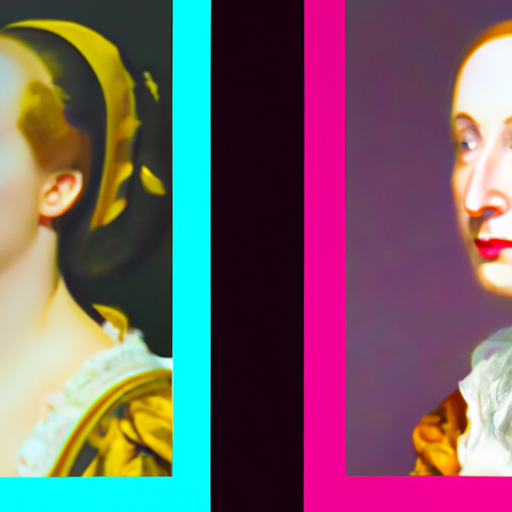
-
Table of Contents
- Revisiting Renaissance Realism in Graphic Design
- The Influence of Renaissance Realism
- Applying Renaissance Realism in Graphic Design
- Case Studies: Renaissance Realism in Graphic Design
- Case Study 1: Apple’s Product Packaging
- Case Study 2: Movie Posters
- The Relevance of Renaissance Realism in the Modern Era
- Conclusion
Revisiting Renaissance Realism in Graphic Design

The Renaissance period, spanning from the 14th to the 17th century, was a time of great artistic and cultural transformation. It was characterized by a renewed interest in the arts, sciences, and humanism. During this period, artists such as Leonardo da Vinci, Michelangelo, and Raphael created masterpieces that still captivate audiences today. While the Renaissance is often associated with traditional fine art, its principles and aesthetics can also be applied to graphic design. In this article, we will explore the concept of Renaissance realism in graphic design and its relevance in the modern era.
The Influence of Renaissance Realism
The Renaissance was a time of significant advancements in the field of art. Artists during this period sought to depict the world as accurately as possible, focusing on naturalistic representation and perspective. This emphasis on realism can be seen in the works of renowned painters such as Leonardo da Vinci’s “Mona Lisa” and Michelangelo’s “David.” These artists meticulously studied human anatomy, light, and shadow to create lifelike and emotionally engaging artworks.
Fast forward to the present day, and we can still see the influence of Renaissance realism in graphic design. Many contemporary designers draw inspiration from the techniques and principles employed by Renaissance artists. By incorporating elements of realism into their designs, they create visually striking and engaging compositions that resonate with viewers.
Applying Renaissance Realism in Graphic Design
When applying Renaissance realism to graphic design, several key principles come into play. These principles can help designers create visually compelling and emotionally resonant designs:
- Attention to Detail: Renaissance artists paid meticulous attention to detail, and this principle can be applied to graphic design as well. By focusing on the finer elements of a design, such as textures, lighting, and shading, designers can create a sense of depth and realism.
- Human Anatomy: The study of human anatomy was crucial for Renaissance artists, and it remains relevant in graphic design. Understanding the human form and how it moves can help designers create more realistic and relatable characters and figures in their designs.
- Perspective: Renaissance artists mastered the use of perspective to create a sense of depth and dimension in their artworks. This principle can be applied to graphic design by using techniques such as vanishing points and foreshortening to create a three-dimensional effect.
- Light and Shadow: The use of light and shadow was a defining characteristic of Renaissance art. By understanding how light interacts with objects, designers can create a sense of realism and depth in their designs.
By incorporating these principles into their designs, graphic designers can create visually stunning compositions that evoke a sense of awe and wonder, much like the artworks of the Renaissance.
Case Studies: Renaissance Realism in Graphic Design
Several contemporary designers have successfully incorporated Renaissance realism into their graphic design work. Let’s explore a few case studies:
Case Study 1: Apple’s Product Packaging
Apple is known for its sleek and minimalist product packaging. However, if we look closely, we can see the influence of Renaissance realism in their designs. Apple pays great attention to detail, ensuring that every element of their packaging is meticulously crafted. The use of subtle textures, lighting effects, and shadows creates a sense of depth and realism, making their products visually appealing and desirable.
Case Study 2: Movie Posters
Movie posters often incorporate elements of Renaissance realism to captivate audiences and convey the essence of the film. By using techniques such as dramatic lighting, realistic character depictions, and intricate details, movie posters create a sense of anticipation and intrigue. For example, the poster for the film “The Revenant” features a realistic depiction of the main character, emphasizing the harshness of the environment and the intensity of the story.
The Relevance of Renaissance Realism in the Modern Era
With the advent of digital technology, graphic design has evolved significantly. However, the principles of Renaissance realism remain relevant in the modern era. In a world saturated with digital imagery, designs that incorporate elements of realism stand out and capture the viewer’s attention. By creating visually engaging and emotionally resonant designs, designers can establish a deeper connection with their audience.
Renaissance realism also adds a sense of timelessness to designs. Just as Renaissance artworks continue to captivate audiences centuries later, designs that incorporate elements of realism have a lasting impact. They transcend trends and fads, creating a sense of permanence and enduring beauty.
Conclusion
The principles of Renaissance realism have stood the test of time and continue to inspire and influence graphic designers today. By incorporating attention to detail, human anatomy, perspective, and light and shadow into their designs, designers can create visually stunning compositions that resonate with viewers. Case studies such as Apple’s product packaging and movie posters demonstrate the successful application of Renaissance realism in contemporary design.
In a world where digital imagery dominates, designs that incorporate elements of realism stand out and establish a deeper connection with the audience. The relevance and timelessness of Renaissance realism make it a valuable approach for graphic designers seeking to create visually compelling and emotionally resonant designs.
